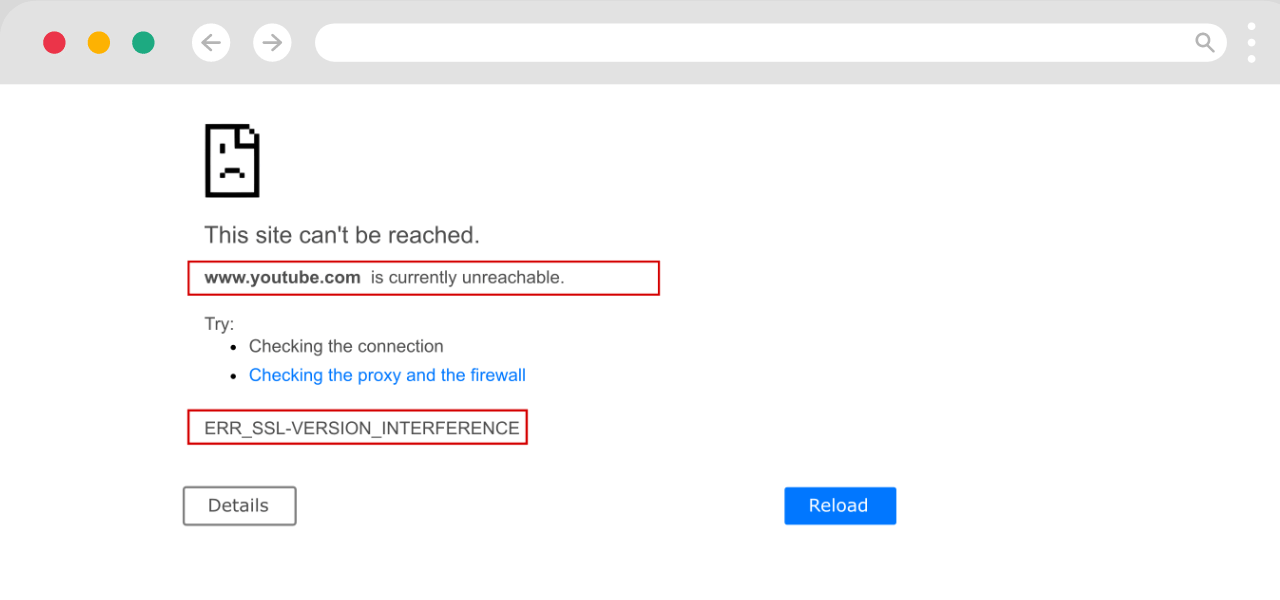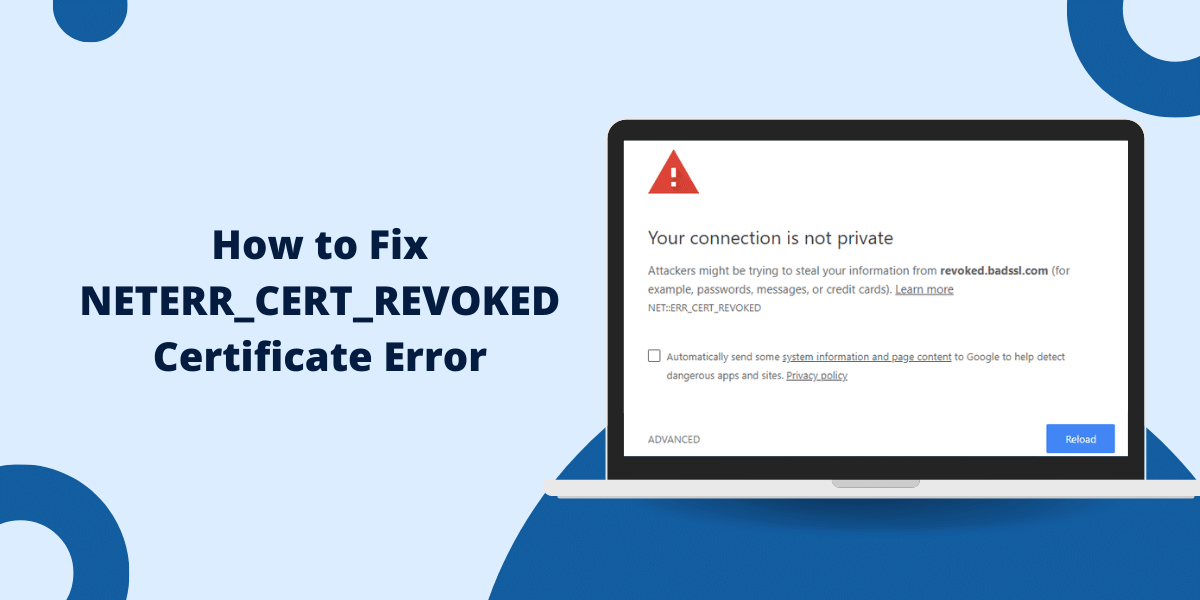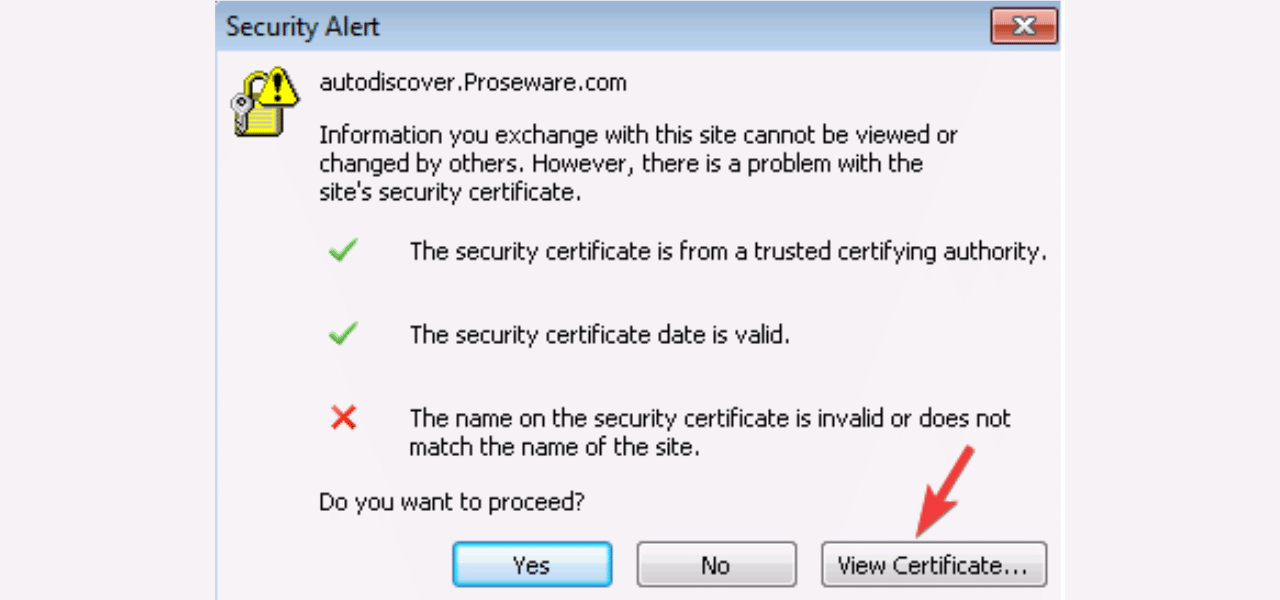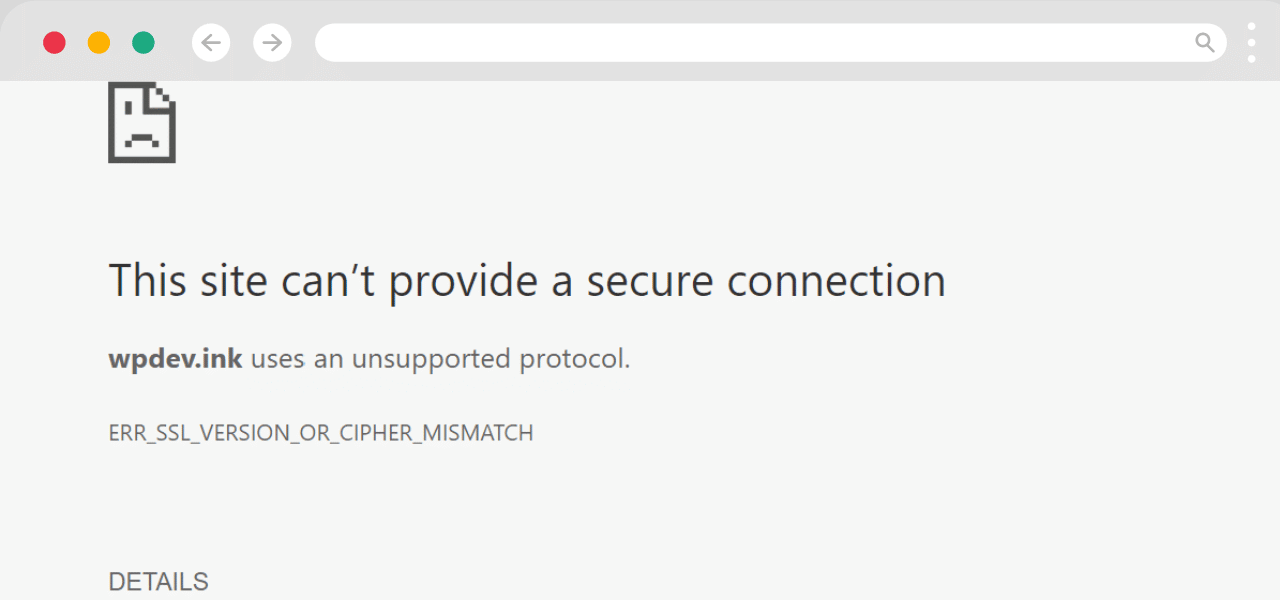What Causes the ERR_SSL_VERSION_INTERFERENCE Error?
This error is caused when the SSL/TLS protocol version on your Chrome browser is not compatible with the version used by the website’s server. HTTPS websites need to establish a secure encrypted connection with your browser before transferring any sensitive data. This is done through a “SSL/TLS handshake”. During this handshake, the browser and server negotiate and agree upon the best SSL/TLS protocol version to use. If there is a mismatch, the connection fails, and Chrome throws the ERR_SSL_VERSION_INTERFERENCE error.
Some common reasons for mismatched SSL/TLS versions are:
- Your Chrome browser is outdated and doesn’t support newer TLS versions used by the website’s server.
- The website’s server is outdated and only supports older SSL versions, while your Chrome uses newer TLS versions.
- Some security software or antivirus on your computer blocks certain SSL/TLS versions causing conflicts.
- Chrome extensions or VPN software that interferes with SSL connections can also lead to this error.
Step-by-Step Guide to Fix ERR_SSL_VERSION_INTERFERENCE
Follow these simple troubleshooting steps to resolve the ERR_SSL_VERSION_INTERFERENCE error in Chrome:
1. Refresh the Page and Retry
The first step is to do a simple page refresh by hitting the refresh icon or F5. Sometimes this resolves any temporary glitches and establishes a proper SSL connection on retry.
If a page refresh doesn’t work, close the browser entirely and restart it. Then open the website that was showing the error.
2. Clear Browsing Data
If reloading the page doesn’t help, try clearing your browsing data:
- Click on the 3-dot menu in the top right corner of Chrome.
- Select ‘Settings’ from the drop-down menu.
- In the Settings tab, click on ‘Privacy and security’ on the left.
- Under ‘Clear browsing data’, click on ‘Choose what to clear’.
- Check the boxes for ‘Cookies and other site data’ and ‘Cached images and files’.
- Use the dropdown menu at the top to select ‘All time’.
- Click ‘Clear data’.
Clearing cookies and cached files forces Chrome to re-establish SSL connections from scratch. This can resolve any corrupt data or cached files related to SSL connections causing issues.
3. Disable Browser Extensions
Browser extensions, VPNs or security software can sometimes interfere with SSL connections in Chrome. Try troubleshooting by disabling any active extensions:
- Click the 3-dot menu > More tools > Extensions.
- On the Extensions page, turn off any extensions you have installed in Chrome.
- Click the blue toggle next to each extension to disable them.
- Refresh the page to see if this resolves the SSL issue.
If the problem disappears after disabling extensions, turn them back on one-by-one until you identify the problematic extension. You can then uninstall or update that particular extension to fix the SSL issue.
4. Reset Chrome Settings to Default
Resetting Chrome to factory default settings can eliminate any corrupted settings that may be causing SSL conflicts:
- Click the 3-dot menu > Settings
- At the bottom of the page, click ‘Advanced’
- Under ‘Reset settings’, click ‘Restore settings to their original defaults’
- In the confirmation dialog, click ‘Reset settings’
- Restart Chrome browser after reset is completed.
This will reset all Chrome settings, flags, disabled extensions, and permissions. Try loading the website again – the SSL error may now be resolved.
5. Update Google Chrome to Latest Version
An outdated Chrome version could be the culprit behind SSL version mismatches. So it’s good practice to keep your browser updated:
- Click the 3 dot menu > Help > About Google Chrome.
- Chrome will automatically check for updates and prompt you to Relaunch if an update is available.
Install the latest Chrome update and try again. Updating gives you the newest SSL libraries used for HTTPS connections.
6. Try Disabling QUIC Protocol
QUIC is an experimental Google protocol built on top of SSL. Disabling it prevents any conflicts it may cause:
- Go to chrome://flags in the address bar.
- Search for ‘QUIC’ and disable the ‘Experimental QUIC protocol’ option.
- Restart the Chrome browser.
Now try loading the website again without QUIC enabled.
7. Use Chrome Flags to Force SSL Version
You can force Chrome to use specific SSL versions only using special flags:
- Go to chrome://flags
- Search for ‘SSL’ and you’ll see several relevant flags.
- The common ones are:
- SSL Version Max
- SSL Version Min
- Enable the flags as follows:
- SSL Version Max – TLS 1.2
- SSL Version Min – TLS 1.2
- Restart Chrome and test the site again.
This will force Chrome to use TLS 1.2 only. If the site works now, it indicates the server was using an older SSL version. Consider updating the server for best compatibility.
8. Try in Chrome Incognito Mode
Incognito mode uses clean browsing session without extensions or cached data that could interfere with SSL connections.
- Click the 3-dot menu > New Incognito window
- Open the problematic HTTPS website in incognito window
- Check if the SSL error appears there or not
If the site works fine in incognito, it confirms something in your main Chrome profile is causing conflicts. Extensions, cached data or cookies are usually the culprit.
9. Update Network Driver Software
Outdated network adapter drivers can also mess with SSL protocols sometimes.
- Open Device Manager in Windows.
- Expand ‘Network adapters’ to see your network hardware.
- Right click on adapters and select ‘Update driver’.
- Manually search and install the latest driver from manufacturer’s website.
Updating to the newest network adapter drivers can resolve any driver-level issues that disrupt SSL connections.
10. Scan for Malware and Viruses
Malware and viruses are infamous for tampering with browsers, connections and SSL certificates. Run a full system scan using reliable antivirus software like Malwarebytes or BitDefender.
Remove any malicious programs detected. Also update your antivirus software to the latest virus definitions. With malware cleaned up, Chrome should be able to establish proper SSL connections again.
11. Use Alternative Secure DNS Service
Your current DNS server settings could also interfere with HTTPS sites in some rare cases.
Try changing to secure DNS services like Cloudflare (1.1.1.1) or Google DNS (8.8.8.8).
- Go to Chrome settings > Security and Privacy > Secure DNS.
- Select ‘With Provider’ and enter the Cloudflare or Google DNS IP addresses.
- Restart browser and access the HTTPS site again.
Alternative DNS may be able to resolve and establish SSL connection successfully.
12. Contact Website Support
If all else fails, get in touch with the website’s tech support team. Provide details of the exact error you are getting. The admins can check if their website has any known SSL compatibility issues or outdated certificates causing the problem.
You can also try accessing the site from a different device or network. If the issue only occurs on your device, the website needs to troubleshoot their server-side SSL configuration. They can then provide customized solutions or fix incompatibilities at their end.
Conclusion
The ERR_SSL_VERSION_INTERFERENCE error in Chrome can prevent you from accessing HTTPS websites, but it’s usually easy to rectify. In most cases, the problem is caused by outdated software or extensions interfering with the SSL handshake process.
Following the step-by-step troubleshooting guide outlined above should help narrow down and resolve the issue in most cases. Common fixes include updating Chrome, disabling extensions, clearing browsing data, resetting Chrome to default settings, and using Chrome flags to force specific SSL protocols.
For best results, try the fixes one-by-one in order until the error is resolved. The error indicates outdated SSL versions, so updating Chrome and related software is key. If the solutions don’t work, the website’s server may require an upgrade for modern TLS versions. In rare cases, DNS or antivirus configurations could also cause this error.
With the right troubleshooting and updates, you can get rid of the annoying ERR_SSL_VERSION_INTERFERENCE error and securely access all your favorite HTTPS websites again.
Common Questions about ERR_SSL_VERSION_INTERFERENCE:
1. Is it safe to access a website showing the ERR_SSL_VERSION_INTERFERENCE error?
No, you should avoid entering any sensitive data or login details on a site showing this error, as the connection is not fully secure. The website may be susceptible to eavesdropping and man-in-the-middle attacks. Inform the site owners to resolve the SSL issues first before using the site.
2. How do I find out what TLS version my browser and website are using?
You can use online SSL checkers to detect the TLS version your Chrome browser uses currently to make HTTPS connections. For the website TLS version, you’ll need to contact the website administrator.
3. What are the latest TLS versions supported in Chrome?
The latest versions of Chrome support up to TLS 1.3 currently. Most modern websites also use TLS 1.2 and 1.3, while old ones may use TLS 1.1 or TLS 1.0.
4. Should I enable TLS 1.0 or 1.1 in Chrome to fix this?
No, TLS 1.0 and 1.1 are outdated protocols with security weaknesses. Avoid enabling them unless absolutely necessary for accessing a legacy system. The website should upgrade their servers to use newer TLS 1.2 or 1.3 instead for best security.
5. How do I know if an antivirus or firewall is blocking SSL connections?
You can check if any security software is interfering with SSL by temporarily disabling your antivirus, firewall and other security programs. Then try accessing the website to see if the error persists.
If the site starts working with security software disabled, you’ll need to reconfigure those programs to allow proper SSL connections again. Refer to your security software’s help documentation for details.
6. Will using Incognito mode affect my main Chrome profile?
No, Incognito mode is completely separate and will not make any changes to your default Chrome profile. It simply opens a new temporary session for testing purposes without impacting your extensions, history, or bookmarks.
7. Can malicious extensions cause ERR_SSL_VERSION_INTERFERENCE?
Yes, malicious, or poorly coded Chrome extensions could certainly disrupt SSL connections and result in this error. You should only install extensions from trusted developers and the Chrome Web Store. Check reviews and permissions before installing extensions to ensure they are safe.



